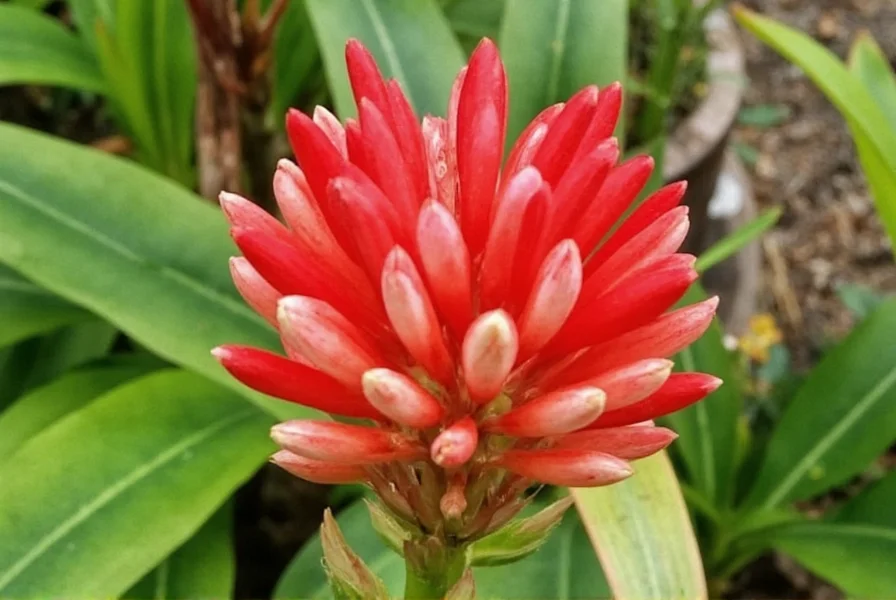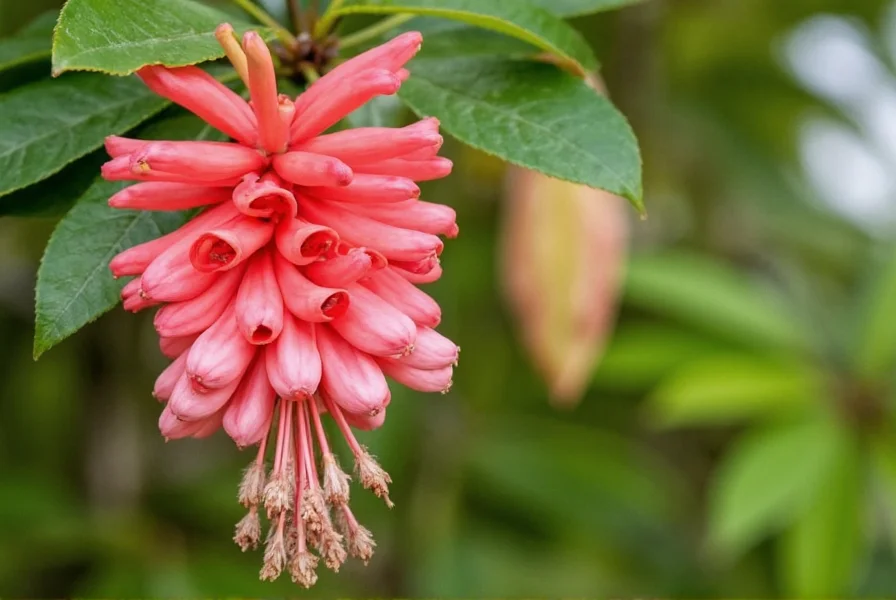When gardeners search for flowering ginger varieties for tropical landscapes, they're seeking more than just pretty blooms—they want reliable information about these striking plants that can transform ordinary gardens into exotic retreats. Unlike culinary ginger, which is grown for its rhizomes, flowering ginger species are cultivated primarily for their dramatic floral displays and lush foliage.
Understanding Flowering Ginger: Beyond the Culinary Root
Many people confuse flowering ginger with the ginger root found in grocery stores. While both belong to the Zingiberaceae family, they serve entirely different purposes. Culinary ginger (Zingiber officinale) produces modest yellow flowers but is primarily cultivated for its edible rhizome. In contrast, ornamental ginger plant care focuses on species like Hedychium, Alpinia, and Costus that produce spectacular blooms worth showcasing in garden designs.
Popular Flowering Ginger Varieties for Gardeners
With over 1,300 species in the ginger family, selecting the right variety depends on your climate and garden goals. Here are the most reliable options for home gardeners:
| Variety | Flower Color | Height | Hardiness Zone | Special Features |
|---|---|---|---|---|
| Butterfly Ginger (Hedychium coronarium) | White | 4-8 ft | 8-11 | Fragrant blooms, spreads readily |
| Red Ginger (Alpinia purpurata) | Red | 6-12 ft | 9-12 | Long-lasting inflorescences |
| Shell Ginger (Alpinia zerumbet) | White/Yellow | 6-10 ft | 7-11 | Variegated leaf varieties available |
| Hidden Ginger (Curcuma) | Purple/Pink | 2-3 ft | 8-11 | Flowers emerge from soil, not stems |
When planning your flowering ginger planting guide, consider these varieties' different growth habits. Some, like red ginger, grow tall and work well as dramatic backdrops, while others like hidden ginger stay compact and suit container gardening.
Essential Growing Requirements for Flowering Ginger
Successful cultivation of flowering ginger depends on meeting specific environmental needs. These tropical plants require particular conditions to produce their signature blooms:
Light Requirements
Most flowering ginger varieties prefer partial shade to filtered sunlight. While some species tolerate full sun in cooler climates, intense afternoon sun in hot regions can scorch leaves. In zones 9-11, dappled shade from taller trees creates ideal growing conditions that mimic their natural rainforest habitats.
Soil and Drainage
The best soil for flowering ginger is rich, loamy, and well-draining with a slightly acidic pH (5.5-6.5). Amend heavy clay soils with compost and perlite to improve drainage, as ginger rhizomes will rot in standing water. Raised beds work exceptionally well for growing ginger flowers in containers or poorly draining garden areas.
Watering Needs
Consistent moisture is crucial during the growing season. Water deeply 2-3 times weekly, allowing the top inch of soil to dry between waterings. Reduce watering in winter when plants become dormant. During extended dry periods, flowering ginger will drop leaves as a survival mechanism but typically recovers when moisture returns.
Planting and Care Instructions
For optimal results with your flowering ginger care instructions, follow these proven techniques:
Planting Rhizomes
Plant ginger rhizomes in spring after the last frost. Position them horizontally with the growth buds (knobs) facing upward, covering with 1-2 inches of soil. Space plants 18-24 inches apart to allow for spreading. In cooler zones, start rhizomes indoors 6-8 weeks before the last frost.
Fertilization Strategy
Feed monthly during the growing season with a balanced, slow-release fertilizer (10-10-10). Alternatively, use organic options like compost tea or fish emulsion. Avoid high-nitrogen fertilizers that promote excessive foliage at the expense of blooms. For flowering ginger in landscape design, incorporate bone meal at planting to encourage robust flowering.
Winter Care in Cooler Climates
In zones below 8, dig up rhizomes before the first frost, clean off soil, and store in peat moss or vermiculite in a cool, dark place (50-60°F). Alternatively, grow flowering ginger in containers that can be moved indoors during winter. Reduce watering significantly during dormancy but don't let rhizomes completely dry out.

Common Problems and Solutions
While generally pest-resistant, flowering ginger can encounter these issues:
- Yellowing leaves: Usually indicates overwatering or poor drainage. Improve soil structure and reduce watering frequency.
- No blooms: Insufficient light, inadequate nutrients, or young plants not yet mature enough to flower. Most gingers need 2-3 years to reach flowering maturity.
- Rhizome rot: Caused by waterlogged soil. Immediately dig up affected plants, trim damaged sections, and replant in better-draining location.
- Leaf spot: Fungal disease treated with copper-based fungicides. Improve air circulation and avoid overhead watering.
Flowering Ginger vs. Culinary Ginger: Key Differences
Understanding the distinction between these ginger types prevents gardening disappointment:
- Flowering ginger: Grown for ornamental value, produces showy blooms, rhizomes typically not used culinarily
- Culinary ginger: Grown for edible rhizomes, produces modest yellow flowers, requires different growing conditions
While some flowering ginger varieties have edible parts (like butterfly ginger flowers in salads), they don't provide the pungent rhizome valued in cooking. Attempting to grow culinary ginger for flowers often leads to disappointment, as it rarely blooms outside tropical climates.
Seasonal Care Calendar
Follow this timeline for when does flowering ginger bloom and how to support each growth stage:
- Spring: Plant rhizomes after last frost; begin regular watering and fertilizing
- Summer: Peak growing season; maintain consistent moisture; watch for first blooms
- Fall: Flowers continue; reduce watering as temperatures drop; prepare for dormancy
- Winter: Dormant period; minimal water; protect rhizomes from freezing
Most flowering ginger varieties bloom from mid-summer through fall, with some species like shell ginger producing flowers well into early winter in warm climates.
Designing with Flowering Ginger
These plants excel in tropical-themed gardens, poolscapes, and shaded borders. Use taller varieties like red ginger as dramatic focal points, while smaller types like hidden ginger work well in woodland gardens or along pathways. Pair with complementary plants like ferns, elephant ears, and cast iron plant for layered tropical effects.
For container gardening, choose dwarf varieties and use pots at least 12 inches wide with drainage holes. Container-grown tropical flowering ginger varieties benefit from being moved to protected locations during temperature extremes.
Conclusion: Creating Your Ginger Paradise
Flowering ginger brings unparalleled tropical drama to gardens with relatively straightforward care requirements. By selecting appropriate varieties for your climate, providing proper soil conditions, and following seasonal care guidelines, you can enjoy these stunning plants' exotic blooms year after year. Whether you're designing a full tropical garden or adding just one specimen plant, flowering ginger delivers visual impact that few other perennials can match.
Can flowering ginger grow in full sun?
Most flowering ginger varieties prefer partial shade, especially in hot climates. While some species tolerate morning sun, intense afternoon sun typically scorches leaves. In cooler zones (7-8), they may handle more sun exposure. For optimal flowering ginger care instructions, provide dappled shade that mimics their natural rainforest habitat.
How long does it take for flowering ginger to bloom?
Most flowering ginger varieties begin blooming in their second or third growing season. Some fast-growing types like butterfly ginger may flower in the first season under ideal conditions. Patience is key, as these plants establish extensive rhizome systems before producing their signature blooms. Proper fertilization with phosphorus-rich formulas encourages earlier flowering.
Is flowering ginger invasive?
Some flowering ginger varieties can spread aggressively through rhizomes, particularly butterfly ginger in warm climates. To prevent unwanted spreading, plant in contained areas or use physical barriers. In most regions, flowering ginger remains well-behaved and doesn't exhibit invasive tendencies like some other tropical plants.
Can I grow flowering ginger indoors?
Yes, but flowering ginger requires bright, indirect light and high humidity to thrive indoors. Choose compact varieties like hidden ginger for best results. Provide consistent moisture without waterlogging, and maintain temperatures above 60°F. Indoor plants typically grow smaller and may bloom less frequently than outdoor specimens, but can make striking houseplants with proper care.
How do I propagate flowering ginger?
The easiest method is division. In spring, dig up established clumps and separate rhizomes, ensuring each section has at least one growth bud. Replant immediately. You can also grow from seed, though this takes longer and may not produce plants identical to the parent. For flowering ginger planting guide success, divide every 3-4 years to maintain vigorous growth and flowering.











 浙公网安备
33010002000092号
浙公网安备
33010002000092号 浙B2-20120091-4
浙B2-20120091-4